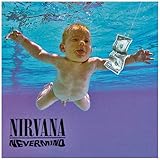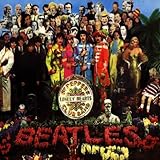The new research, pre-published on arXiv.org, shows that some cities are consistently ahead of the flock and pick music hits before they become popular.
"I would expect big cities like New York and Los Angeles to be ahead, basically, but the data say that's not the case," said Conrad Lee, a computer scientist at University College Dublin, who led the study. "It's really Atlanta, Montreal, Toronto and the Scandinavian cities that come out ahead."
Pigeons, points and artist space
To separate the trendsetters from the laggards, Lee adapted a method that had been used to identify the lead birds in flocks of pigeons.
"Even though it was used for kind of a specific, obscure topic, you can use the method for measuring leadership in many different systems — so long as you can plot things as points in space," Lee told LiveScience.
To plot those points, Lee gathered stats from the music-sharing site last.fm, which tracks who's listening to what songs and where. Then he translated about 200 cities' music preferences into coordinates within what he calls "artist space."
Imagine making a simple graph. On one axis, you plot the number of times people in your city listen to an artist — say, Lady Gaga — this month. On the other axis, plot the number of times they listen to another group, like Foo Fighters. Those coordinates pinpoint your city within a two-dimensional artist space. [Science as Art: A Gallery]
Now, imagine thousands of artists and dozens of cities all plotted on the same graph in a many-dimensional artist space. Cities that listen to the same artists in similar amounts are close together in this space, and cities with different tastes are farther apart.
By analyzing how cities moved around in artist space over time, Lee could tease out the trendsetting cities that consistently latch onto music before it becomes popular from the laggards, cities that are late to the party, so to speak.
Who are the "cool kids?"
Atlanta, Stockholm and Oslo were the overall leaders in Lee's calculations, but different music genres often had different lead cities. Paris and Montreal were the trendsetters in indie music, for example. Atlanta, Toronto and Chicago, meanwhile, were major leaders in North American hip-hop trends. New York and Los Angeles, Lee's original bets, usually ranked somewhere in the middle of the leader boards overall.
Why are some cities consistently ahead of the trends? That's hard to say, since the study didn't look at what's behind the popularity of certain artists in certain cities. It could be that Atlanta and Stockholm genuinely do influence other cities' music picks, but something more random, like tour dates or marketing strategies, may also be at play, Lee said.
Another interesting find was that neighboring cities often, but not always, share the same music tastes. For instance, pairs of cities, including Cincinnati and Columbus, Ohio; Portland, Ore., and Seattle, Wash.; and Berlin and Dresden, Germany, shared similar music preferences.
"That makes intuitive sense given their geographic locations," Lee said.
But the trends in New York, Chicago, San Francisco, Austin, Seattle and Portland also cluster together, even though the cities span the North American continent.
"I'd say these are the 'cool kids' — trendy cities with similar tastes," Lee wrote in an online analysis. Similarly, he points out, Montreal, Toronto and Vancouver have tastes different from the rest of Canada.
Lee's findings are currently under further peer review and have yet to be published in a scientific journal. Next on his to-do list? He hopes to use this method to predict what artists or songs will become popular. Until then, Lee and everyone else can only guess as to why some cities are good at picking chart-toppers.
"We're all tempted to try and make sense of the data," Lee said, "but it's all just speculation, really."
Creative Genius: The World's Greatest Minds Trippy Tales: The History of 8 Hallucinogens Top Ten Unexplained Phenomena Copyright 2012 LiveScience, a TechMediaNetwork company. All rights reserved. This material may not be published, broadcast, rewritten or redistributed.
Powered by teTuku Auto Content
music photos





music products

Blue Bells Scotland Trilogy ebook
Reasons About Contemporary Romance ebook
Music in the City ebook
Nevermind Nirvana
Sgt Peppers Lonely Hearts Club
Viva Vida Coldplay
The new research, pre-published on arXiv.org, shows that some cities are consistently ahead of the flock and pick music hits before they become popular.
"I would expect big cities like New York and Los Angeles to be ahead, basically, but the data say that's not the case," said Conrad Lee, a computer scientist at University College Dublin, who led the study. "It's really Atlanta, Montreal, Toronto and the Scandinavian cities that come out ahead."
Pigeons, points and artist space
To separate the trendsetters from the laggards, Lee adapted a method that had been used to identify the lead birds in flocks of pigeons.
"Even though it was used for kind of a specific, obscure topic, you can use the method for measuring leadership in many different systems — so long as you can plot things as points in space," Lee told LiveScience.
To plot those points, Lee gathered stats from the music-sharing site last.fm, which tracks who's listening to what songs and where. Then he translated about 200 cities' music preferences into coordinates within what he calls "artist space."
Imagine making a simple graph. On one axis, you plot the number of times people in your city listen to an artist — say, Lady Gaga — this month. On the other axis, plot the number of times they listen to another group, like Foo Fighters. Those coordinates pinpoint your city within a two-dimensional artist space. [Science as Art: A Gallery]
Now, imagine thousands of artists and dozens of cities all plotted on the same graph in a many-dimensional artist space. Cities that listen to the same artists in similar amounts are close together in this space, and cities with different tastes are farther apart.
By analyzing how cities moved around in artist space over time, Lee could tease out the trendsetting cities that consistently latch onto music before it becomes popular from the laggards, cities that are late to the party, so to speak.
Who are the "cool kids?"
Atlanta, Stockholm and Oslo were the overall leaders in Lee's calculations, but different music genres often had different lead cities. Paris and Montreal were the trendsetters in indie music, for example. Atlanta, Toronto and Chicago, meanwhile, were major leaders in North American hip-hop trends. New York and Los Angeles, Lee's original bets, usually ranked somewhere in the middle of the leader boards overall.
Why are some cities consistently ahead of the trends? That's hard to say, since the study didn't look at what's behind the popularity of certain artists in certain cities. It could be that Atlanta and Stockholm genuinely do influence other cities' music picks, but something more random, like tour dates or marketing strategies, may also be at play, Lee said.
Another interesting find was that neighboring cities often, but not always, share the same music tastes. For instance, pairs of cities, including Cincinnati and Columbus, Ohio; Portland, Ore., and Seattle, Wash.; and Berlin and Dresden, Germany, shared similar music preferences.
"That makes intuitive sense given their geographic locations," Lee said.
But the trends in New York, Chicago, San Francisco, Austin, Seattle and Portland also cluster together, even though the cities span the North American continent.
"I'd say these are the 'cool kids' — trendy cities with similar tastes," Lee wrote in an online analysis. Similarly, he points out, Montreal, Toronto and Vancouver have tastes different from the rest of Canada.
Lee's findings are currently under further peer review and have yet to be published in a scientific journal. Next on his to-do list? He hopes to use this method to predict what artists or songs will become popular. Until then, Lee and everyone else can only guess as to why some cities are good at picking chart-toppers.
"We're all tempted to try and make sense of the data," Lee said, "but it's all just speculation, really."
Creative Genius: The World's Greatest Minds Trippy Tales: The History of 8 Hallucinogens Top Ten Unexplained Phenomena Copyright 2012 LiveScience, a TechMediaNetwork company. All rights reserved. This material may not be published, broadcast, rewritten or redistributed.
Tidak ada komentar:
Posting Komentar